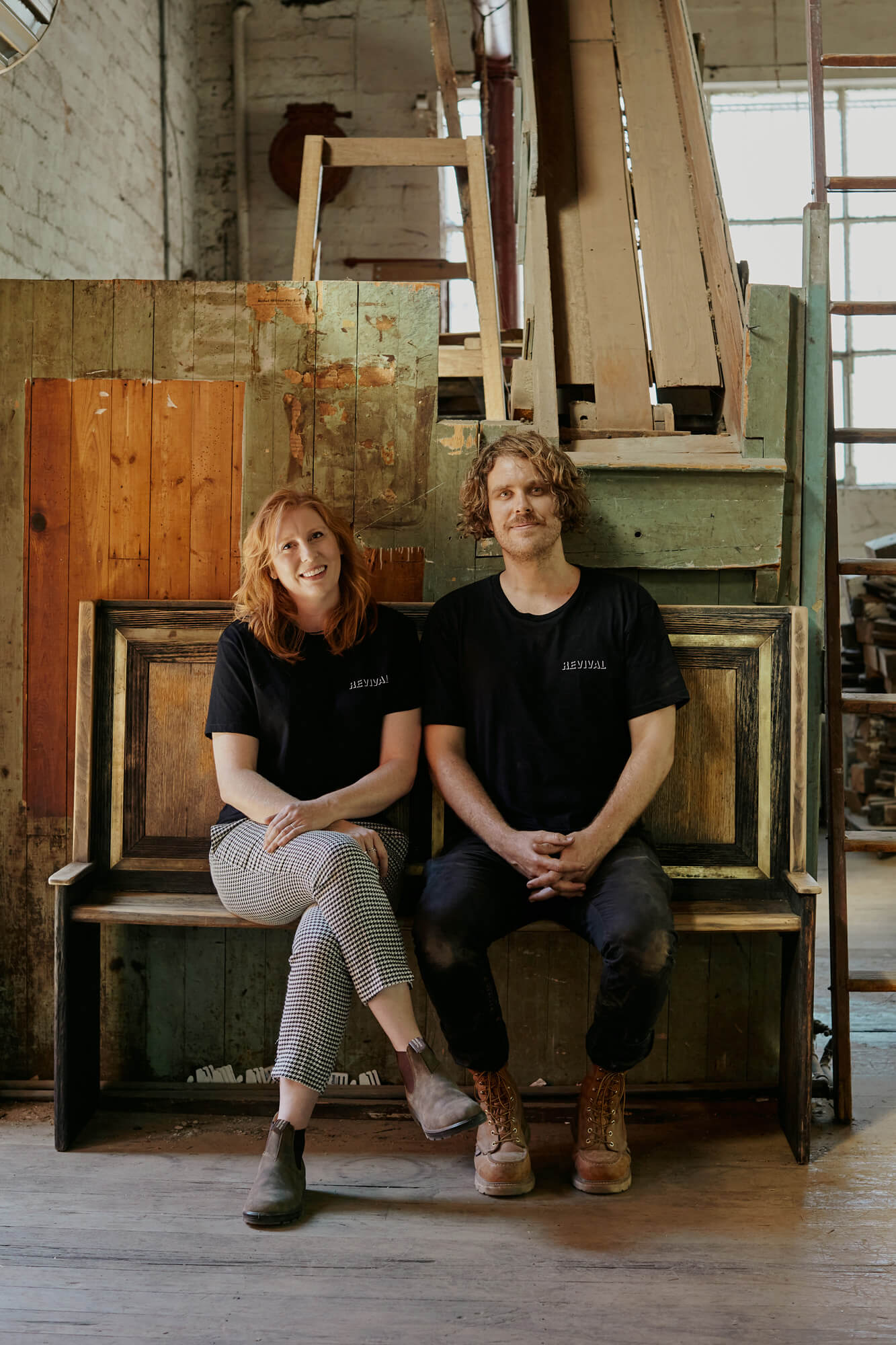When people talk about the ‘circular economy’ in construction, it can sound like the future: buildings that are designed to be taken apart at the end of their life and the materials re-used or recycled. But it’s already happening.
When he was a young builder, Robbie Neville wanted to transform more of the old materials he found on sites into new builds. “You’d take down the old structure and you’d have a huge amount of high-quality timber and bricks that you could build with again. But I learned that there were no systems and no infrastructure for doing that,” he says.
“There were a few reasons given: the engineers didn’t want to certify materials they didn’t have all the information on and the other trades weren’t used to working with recycled materials. It was a massive pain.”
Out of that frustration, he formed a new company. Revival is a Melbourne-based sustainable building practice. Robbie runs the building side of it, and his business partner is a structural engineer. They have a team of builders, joiners and craftspeople as part of the business and, in addition to building, provide a series of services ranging from recycled-timber furniture making to Existing Materials Consultants.
“That means we help people to look at what they have and how they can reuse those resources,” Robbie says. “From developers to designers, we can show them how relevant existing materials can be to their vision and help them to understand the process of getting them from the existing structure to the new one.”
It’s a commercially sound process as well as a sustainable one. Deconstruction costs a lot, as does waste removal. Add to that the rising costs of building materials and the more you can re-use, the better. The Revival team documents all the existing materials and delivers a detailed report showing both the physical and carbon store values of each item, as well as how they can be reintegrated into a new structure or reused where they are. From there, they can deliver designs, building services and interior work.
Of course, where needed, the team adds new materials. “We’ve been working on a big project in Collingwood where we had to replace all the structural columns and a lot of other parts,” says Robbie. “But we’ve salvaged every scrap of timber and brick and they’re all going back into the new building in new forms. One of our friends has been making tiles for that building and she’s even used the minerals in the rubble to make glaze for the tiles!”
Increasingly, new buildings are being designed for disassembly, with eventual deconstruction and rebuilding from the parts in mind, particularly for buildings using mass timber and made out of modules or panels.
Curtin University’s L3 building was largely built from recycled and upcycled components and breaks down into eight modules that can be reassembled at its next location with almost no waste created in the process. It uses a steel frame that had been abandoned when the original project went bankrupt and 100-year-old jarrah timber among its materials. When it finally reaches the end of its life, 57% of the materials can go straight into other buildings, 25% can be recycled and only 18% will be waste.
